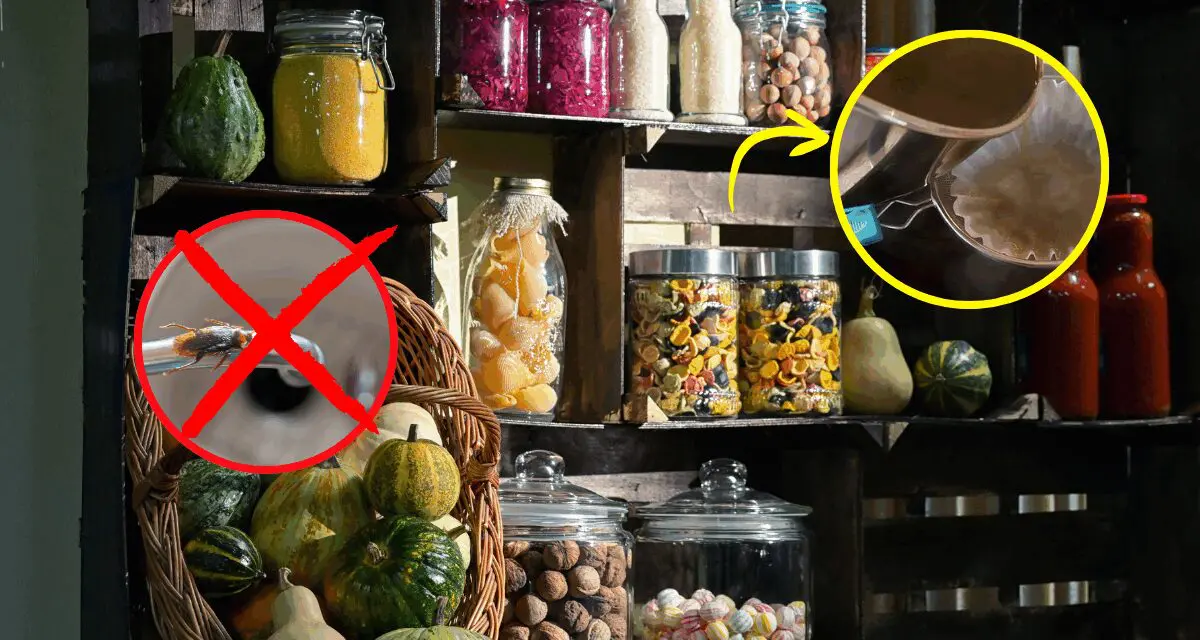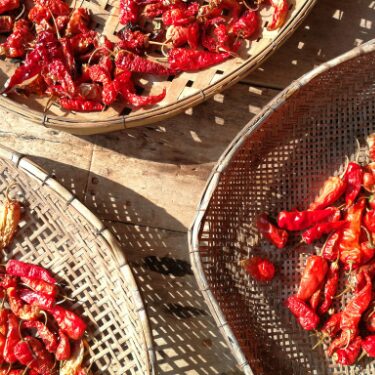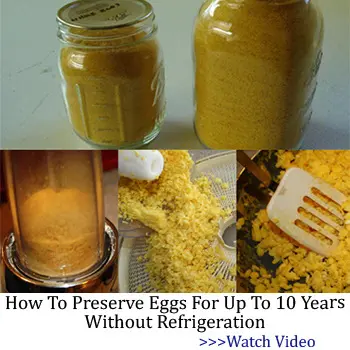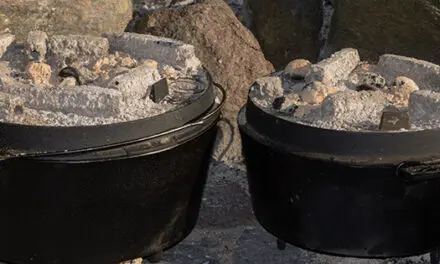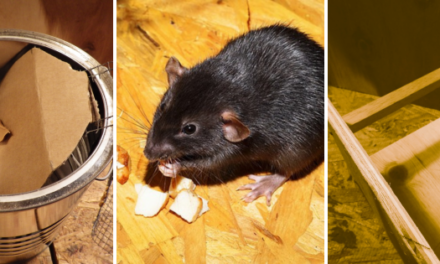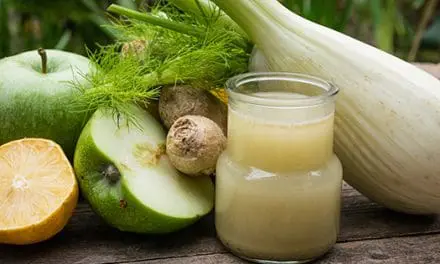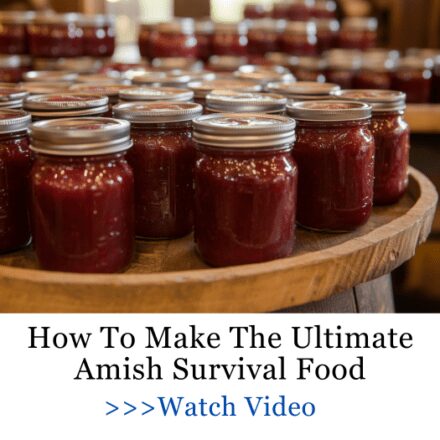The good news with a refrigerator or freezer is they’re basically bug-proof.
Even if a fruit fly or ant finds its way in the cold temperatures soon dispatch them. The bad news is that a pantry is another story. Some of us have open pantry and even when our pantries have a door, how often do we see it open.
The result is that bugs in the house can eventually find their way to the pantry. In fact, they’re often drawn to depending on what we have stored and how. And winter adds another element. Once they’re inside they’re sure not going back out.
Pantry Pests 101
So, who are the bad guys here. Well, there’s quite a few from moths leading to meal worms in flours and pancake mixes, to ants, weevils, perpetual fruit flies, and even spiders. The good news about spiders is that they make actually keep some of the bugs at bay, but how many of us want to see a spider crawling on that bag of pretzels?
Common Sense Cautions
This isn’t about putting poison in the pantry. That’s just a bad idea for a place where you store food. It’s about finding natural herbs, spices and fruits that naturally repel many bugs. It won’t kill them, but it will discourage them and at least keep them away.

Natural Pantry Ideas for Repelling Pests
We’re going to go down the list of various natural solutions for repelling pests in a pantry, but you could also combine them if you seem to have a particular problem with bugs.
We’ll also cover the various ways you can contain them.
Cinnamon Sticks
Cinnamon has a very strong scent, and it lasts and lasts. That’s because it contains a chemical compound called eugenol. It actually disrupts the nervous systems of insects to simply keep them away. You can place them on the shelf, in a fruit bowl, and even put one into one of those open boxes of pancake flour or cake mix. You might get a touch of cinnamon flavor in the mix as a result but if you like cinnamon that’s a plus
Bay Leaves
Bay leaves also repel pantry pests especially moths and weevils. Put a few of them in any open containers of rice, opened cereal boxes or any exposed flours. You’ll want to remove them when preparing the food (especially cereal), but they really work.
Bay leaves can also be used for their remarkable medicinal properties. When brewed into a tea, they provide strong antibacterial and antifungal benefits. At the same time, bay leaf tea can support healthy digestion, reduce inflammation, strengthen the immune system, and even help calm stress. You can learn how to make it yourself, along with over 200+ natural remedies for every part of your body, from this guide.
Coffee Grounds
There’s no lack of uses for coffee grounds. In fact, it’s a common way to repel insects in the garden. But hey, they work in the pantry too.
And there are also a lot more benefits
Related: What Happens If You Spread Coffee Grounds In Your Garden?
You can use coffee grounds that have already been used to make coffee or spare some that are unused for the pantry. Put them in a small bowl if used, or in a tea ball or small drawstring bag.
Whole Cloves
Cloves have a very strong scent, and they have been shown to deter and repel beetles and moths. Here again, you can put them in a tea ball, bowl or sachet.
They’re best used around flours and baking mixes where moths (and their meal worms), plus beetles tend to congregate.
Chili Peppers
This is all about capsaicin. Capsaicin makes chili peppers hot, and bugs don’t like it. It’s best if you dry and chop the peppers into flakes. A tea ball works perfect. Use them anywhere and you can use them in combination.
Essential Oils
Oils derived from eucalyptus and mints repels spiders and ants. Sprinkle a few drops on cotton balls and place them in the corner of the pantry. Refresh them every couple of weeks.
Also Keep Your Water Safe
Just like your pantry, water can attract pests or become contaminated if not stored properly. It’s easy to overlook as it might seem safe sitting in a jug on the shelf, but even a small lapse in storage can turn it into a serious health risk. Contaminated water can quickly become a breeding ground for bacteria, mold, or even insects, and drinking it can make you and your family sick. Rodents and pests are also drawn to open containers, which can compromise your supply without you even noticing.
Sealed containers and careful placement are essential. Regularly check stored water and, if possible, keep simple filtration tools or natural purifiers on hand. A few minutes of preparation today can prevent a dangerous, health-threatening crisis tomorrow.
I learned from A Navy SEAL’s Bug-In Guide just how critical it is to plan for a safe water supply. The guide shows it’s possible to stockpile over a ton of water, enough to last a full year, if stored correctly. Yeah, I was shocked too. A literal ton. In that same guide, I also discovered:
- Why bleach isn’t the best for purifying water (and what to use instead)
- Why placing a silver coin in a blue barrel can keep water fresh longer
- How to test your water to know if it’s still safe to drink
Pantry Storage Tips
The fundamental problem with pests in the pantry comes from open containers of anything. And while a lot of us pride ourselves on having closed containers there are some basic fails that we all do without thinking about it.
- Cereal Boxes
Most cereal boxes just don’t have a tight seal. It’s usually a cardboard flap that we may or may not remember to fold in. If a bug can find a gap in a cardboard box, it will. Make sure you fold over that flap and roll up that frustrating cellophane bag inside.
- Pancake and Waffle Mixes
This gets back to the same problem with cardboard boxes but with pancake and waffle mixes it’s worse. There’s no cellophane bag inside and that little, folded over flap never seems to quite get it close. Think about putting the whole box of pancake and waffle mixes in a large, resealable plastic bag. That’ll keep the bugs out.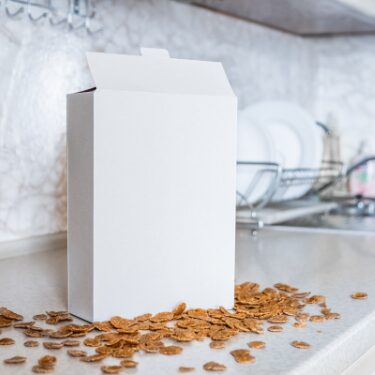
- Cake Mixes
Same problem and same solution with pancake mixes. If the box is open and you didn’t use all of the cake mix or cake flour, get it into that resealable plastic bag.
- Corn Meal and Flour
Corn meal and flour are often packaged in paper bags. We open then and then fold them over – sometimes. They’re best kept in dedicated containers with a tight fitting lid. Corn meal in particular is subject to meal worms. The more you can contain something with a tight fitting lid, the better.
But proper storage isn’t the only way to make your pantry staples last. There is a community that has, over the course of centuries, perfected the art of making long-lasting bread using methods both practical and innovative. I learned one of these remarkable techniques first hand from a member of the Amish community, via The Amish Ways Book: a traditional recipe known as bread in a jar, originally brought over from Europe and carefully preserved through generations.
What makes this bread truly unique is that it isn’t baked in a conventional oven. Instead, it’s prepared and cooked directly inside glass jars, allowing it to be safely canned and stored for extended periods without refrigeration. By using this method, you not only avoid the risk of flour mites and mold, but you also gain a reliable way to preserve one of the most essential staple foods in your prepper pantry. The result is a shelf-stable, nutrient-rich bread that can last for months or even years when stored properly.
👉 Here’s how you can make Bread in a Jar!
- Keep the Pantry Door Closed
It’s not full proof but if you can at least encourage the family to keep the pantry door closed it will help to deter insects from easy entry.
- Keep an Eye on Things
Any time you go into the pantry for any reason, do a quick inventory to see if any pests have found their way in. Usually when we’re cooking we’re in a hurry to just collect ingredients for the recipe. If you ever have a problem with bugs in the pantry it’s worth taking a 10 to 20 seconds to just look around on the shelves.
Protect Your Food with a Safe Storage Space
It’s not just pests you need to think about. Sometimes protecting your food means thinking even bigger than this.
Having a secure, hidden space in your home or backyard can keep your essential supplies safe no matter what happens above ground. Ideally, it should have reinforced walls, proper ventilation, and independent power sources for things like radios or solar chargers. This way, even if the power goes out or electronics fail, you remain self-reliant and your food stays protected.
A modern underground cellar, like the one described in The Easy Cellar, is perfect for this. Just a few feet beneath your backyard, it can hold enough food and water to sustain your household for weeks or even months. Inspired by traditional root cellars, these designs have been updated for extra security and practicality, offering protection not just from pests, but also from emergencies like power failures or severe storms.
Best of all, this kind of shelter is surprisingly affordable. You can build one for under $400 in less than a week, entirely on your own, without expensive contractors or specialized equipment. It’s a practical way to protect your pantry, your supplies, and your peace of mind no matter what comes your way.
Final Thoughts
Keeping your pantry safe from pests and protecting your food doesn’t have to be complicated—or expensive. From simple solutions like cinnamon sticks, bay leaves, and cloves, to thoughtful storage habits and even a dedicated underground cellar, there are plenty of ways to take control of your food and supplies.
The key is consistency and a little planning. By combining natural pest repellents with smart storage strategies, you can keep your pantry clean, your food fresh, and your household prepared for anything. And if you want to take your food protection and home preparedness even further, guides like Joel Lambert’s Navy SEAL Bug-In Guide offer step-by-step solutions that make it simple to safeguard your home, your pantry, and your peace of mind.
With a few proactive steps today, you can prevent problems tomorrow and enjoy the confidence that comes with knowing your food and family are secure.
How to Store 2+ Years Worth of Food in a Small Pantry
The Silent Stockpile Killer. Do You Have It In Your Pantry? (Video)
25 Pantry Foods That Actually Expire Quickly

